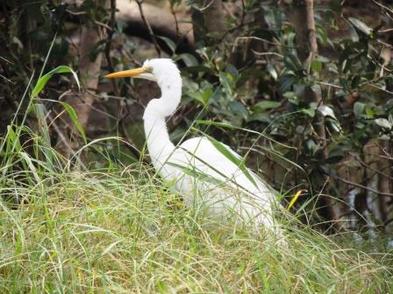Listen to the sounds of wildlife at Saltwater Creek!
Video: The value of saltmarsh habitat
|
Sub-tropical Saltmarsh
This important habitat has recently been listed by the Federal Government as a habitat of concern. In the video on the right, Jock Mackenzie from James Cook University outlines the values of saltmarsh including environmental services such as water quality, fish production, carbon storage and maintaining biodiversity. He also points out some of the threats to saltmarsh. Hays Inlet and Deception Bay both contain important areas of this important habitat. |
|
|
The Soldier Crab
The soldier crab was once a common animal around the Redcliffe peninsula but the building of seawalls to reclaim land for our parks and amenities as well as to control erosion has reduced their habitat. You can still see them on our beaches at Scarborough and on the intertidal flats of Hays Inlet. The only crab that doesn't walk sideways they have a unique way of dealing with the incoming tide. This video highlights the ecology of the soldier crab. Did you know soldier crabs are air-breathers and build their own igloo? |
|
|
Native Bees
Narration with close up video of the native stingless bee, Trigona carbonaria and an inside look at it's hive including the brood cells. These bees provide honey and are an important pollinator in South East Queensland. The Mangroves of Moreton Bay
Estuarine areas around Redcliffe are sheltered and are characterised by fringes of Mangrove Forests, especially around Hays Inlet in the South and Deception Bay in the North. This habitat is important for wading birds and other wildlife including our fisheries. In this video you can check out some of the wildlife utilising the mangrove forests around Moreton Bay. |
|


